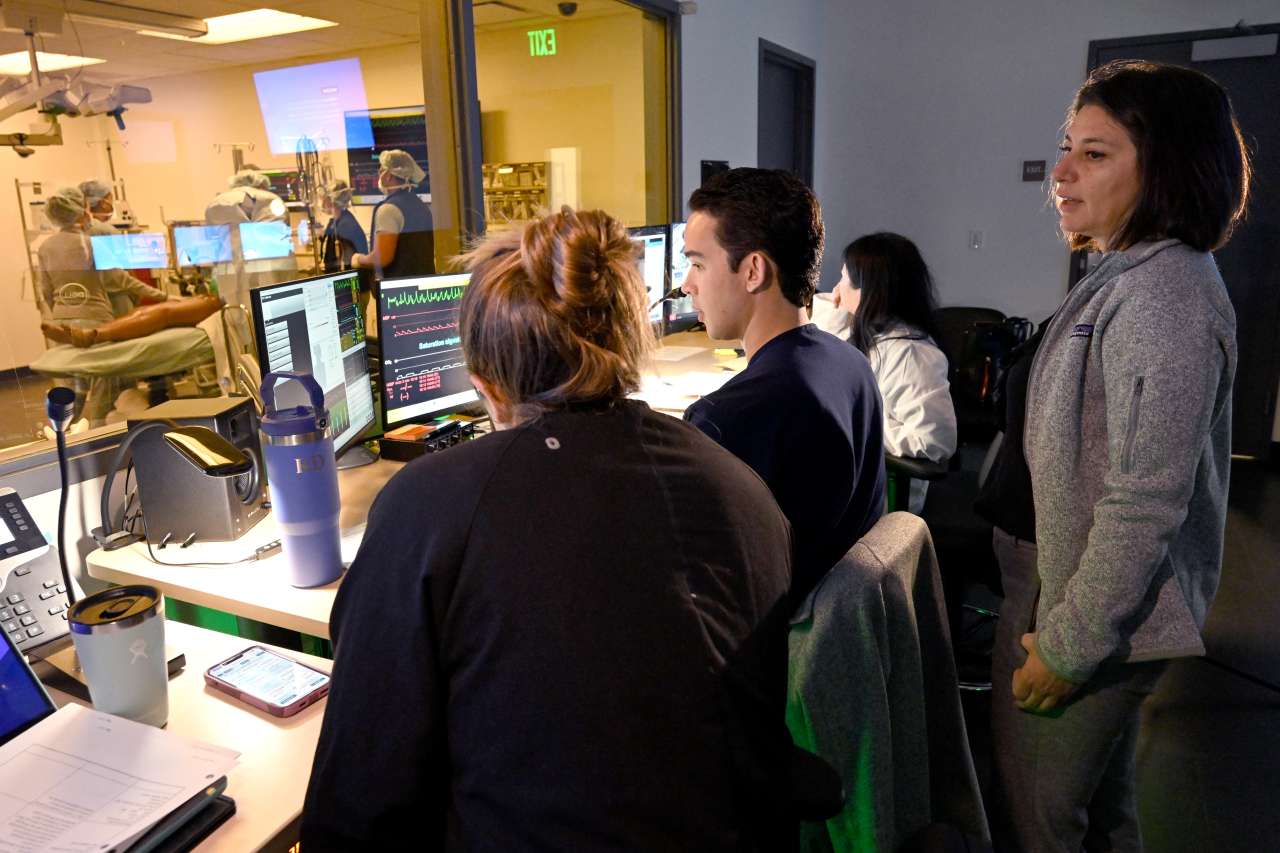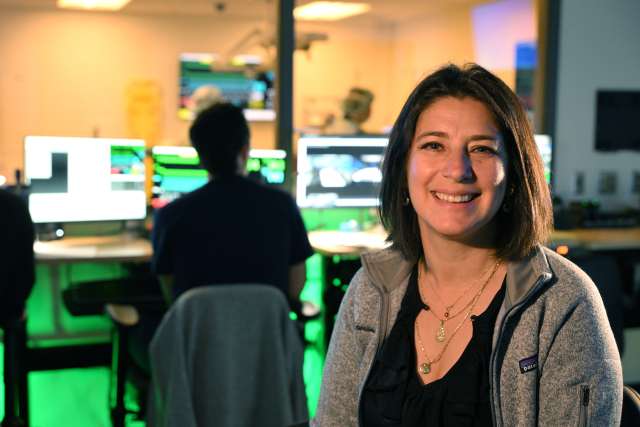As a child of immigrant parents who didn’t speak English, Cecilia Canales, MD, often found herself interpreting for her family during medical appointments.
She recalls accompanying her mother to a gynecology appointment and stumbling over complex medical jargon, trying to translate terms she didn’t fully understand. “It was overwhelming,” Dr. Canales says. “I was just a kid, yet I was responsible for conveying critical health information.”
Now, as a UCLA Health physician-scientist and assistant professor in the Department of Anesthesiology & Perioperative Medicine, Dr. Canales is integrating language-access solutions into clinical care to prevent other families from facing similar obstacles.
Her work is part of UCLA Health’s broader effort to minimize language-related barriers to patient care through a robust program that includes trained medical interpreters, multilingual clinicians and culturally adapted patient education materials. It’s vital in a heavily populated region where, according to the U.S. Census Bureau, 55% of residents age 5 and older speak a language other than English at home.
Seven trained UCLA Health interpreters and two language service operations coordinators facilitate access to care in more than 200 languages. In 2024, UCLA Health provided interpretation over phone or video more than 124,000 times and nearly 5,600 times in-person, during patient encounters. Interpretation services were provided in 112 languages: Among the most requested were Spanish, American Sign Language (ASL), Mandarin, Korean, Farsi, Russian, Armenian, Arabic, Cantonese and Japanese.
Rigorous training
UCLA Health’s in-house interpreters are nationally certified through one of two governing bodies: the National Board of Certification for Medical Interpreters (NBCMI) or the Certification Commission for Healthcare Interpreters (CCHI). These professionals complete a 40-hour medical interpreter training, follow strict ethics and standards of practice, and demonstrate fluency, including advanced knowledge of medical terminology, in at least one language other than English.
“Bilingual does not equal interpreter,” says Marlon Duarte, director of language and hospitality services for the UCLA Health Office of Patient Experience, whose goal is to create a welcoming, healing, caring, safe and professional environment for patients, their families, visitors and each other. “Accurate interpretation requires formal training and certification to avoid omissions, substitutions, or misunderstandings, especially in emotionally charged or medically complex scenarios.”
By passing a standardized language proficiency assessment aligned with a federal government standard, more than 950 UCLA Health employees have qualified to speak with patients in a language other than English. This internal assessment determines whether bilingual staff — including doctors, nurses, social workers and frontline employees — can carry out their professional role and safely communicate with patients using that target language.
While not a national certification, the assessment confirms they are proficient enough to speak for themselves. However, they are not allowed to interpret for colleagues or translate written materials.
The number of staff who have taken the assessment has grown rapidly, increasing from 83 just three years ago.
"When our team members take the formal language proficiency assessment, they are demonstrating UCLA Health’s dedication to exceptional and equitable care for all patients," says Animesh Sabnis, MD, director of health equity analytics and strategy and associate professor of pediatrics.
Duarte attributes the increasing popularity of the language assessment to awareness-building efforts; an updated language assistance policy, which formalized requirements for language proficiency assessments and interpreter use; and growing alignment with collaborators such as the Office of Health Equity and Inclusive Excellence, and clinical leaders such as Dr. Canales.

Dr. Canales is leading efforts in her anesthesiology department and across the organization to close the gap in mental health screenings and surgical care for older adults who don’t speak English. Such patients are far less likely to get screened for memory or cognition difficulties before surgery.
A recent study led by Dr. Canales revealed that only 58% of non-English-speaking UCLA Health patients received preoperative cognitive assessments, compared to 89% of English speakers — a gap that often leaves patients at higher risk for postoperative complications such as delirium.
“Language barriers can profoundly impact patient outcomes,” Dr. Canales explains. “When patients and providers struggle to communicate, critical details can be lost, leading to delays in diagnosis or treatment.”
To address this, Dr. Canales developed a simulation-based training program for anesthesiology residents. Held at the UCLA Simulation Center in Rosenfeld Hall, the program immerses trainees in real-world scenarios using standardized patient actors and interpreters to refine communication strategies.
“We’ve trained staff to work effectively with video and phone interpreters to ensure patients feel seen and understood,” she says.
While Dr. Canales’ program originated in anesthesiology, she is working with surgical teams, nurses and perioperative staff to expand training across multiple specialties. The goal is to ensure that all UCLA Health caregivers understand how to effectively use interpreters and communicate with various patient populations.
Expanding the program
Dr. Canales’ personal and professional experiences have also shaped her advocacy for broader systemic change. Her research findings suggest the need for health care systems to integrate language-concordant screening protocols, ensuring that patients, regardless of language preference, receive the same quality of care.
She is collaborating with Duarte to create resources that can be replicated across UCLA Health and at other health care institutions. Her team is developing durable caregiver guides and patient education tools to address common medical concerns across different languages and cultures. “We’re building a foundation for long-term impact,” she says.
“Health care is about connection,” Dr. Canales says. “When we communicate effectively, we can deliver better outcomes for everyone.”





